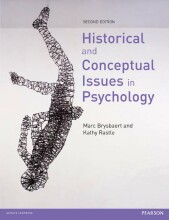Quasi-experiments and small-N designs
25 important questions on Quasi-experiments and small-N designs
What are the possible reasons for a N=1 experiment?
- some conditions are extremely rare and therefor are automatic case studies because finding more is extremely hard
- the population is completely homogenous, there's no variability
- in some conditions every person has different symptoms, so every person is a new experiment
When do you use a small-N design? and with large-N designs?
- if you're interested in the individual.
- if you're interested in population parameters
What is most often the research design with a small-N design? and with large-N designs?
- repeated measures design, a within subject design with one or a few participants.
- classic experiments
- Higher grades + faster learning
- Never study anything twice
- 100% sure, 100% understanding
How is the data presented with small-N designs? and with large-N designs?
How do you check statistical validity with small-N designs? and with large-N designs?
Which threat to internal validity is described; a third variable could be an alternative explanation for the results.
Which threat to internal validity is described; biased results due to the order of tests or presented stimuli.
Which threat to internal validity is described; people's state or behavior changes without there being a plausible explanation for this.
Which threat to internal validity is described; certain factors that affect everybody, but therefor influence the size of the effect.
Which threat to internal validity is described; certain extreme scores score less extreme on the post-test, scored extreme on the pre-test due to extreme state of mind that specific day.
Which threat to internal validity is described; being under the assumption of being in treatment causes an effect.
Which threat to internal validity is described; observer interprets the behavior or scores wrong or even influences the participants.
Which threat to internal validity is described; test results are influenced by the fact that a test was taken before that.
Which threat to internal validity is described; the instruments used to measure aren't suited for this measurements, or different observers observe different behavior. biased results due to instruments.
Which threat to internal validity is described; participants guess what the experiment is about and therefor change their behavior to fit the expected results
Which solution against internal validity threats for small-N designs is described; taking multiple pre-tests to assess reliability of measurement.
Which threat to internal validity is described; outcome of treatment other than predicted.
Which solution against internal validity threats for small-N designs is described; variating the length of the baseline between participants and/or study each participant on a different variable, but on the same treatment.
Which threats to internal validity are tackled by using the multiple baseline design?
- maturation effect
- history effect
- regression to the mean
- placebo effect
Which solution against internal validity threats for small-N designs is described; after a treatment period take the treatment away to see if the problem returns, then reintroduce the treatment to observe if the same improvement occurs.
For what can reversal designs be used, and for what not?
How do we call a type of quasi-experimental design where there's a treatment group, and a control group, and there're different participants at each level of the independent variable.
How do we call a type of quasi-experimental design that studies participants repeatedly on a dependent variable, before, during and after an interruption caused by some event?
How do we call a type of quasi-experimental design that studies the independent variable both as an repeated measurement variable, and as an independent group variable?
How do we call a history threat that only affects the treatment group?
The question on the page originate from the summary of the following study material:
- A unique study and practice tool
- Never study anything twice again
- Get the grades you hope for
- 100% sure, 100% understanding
































